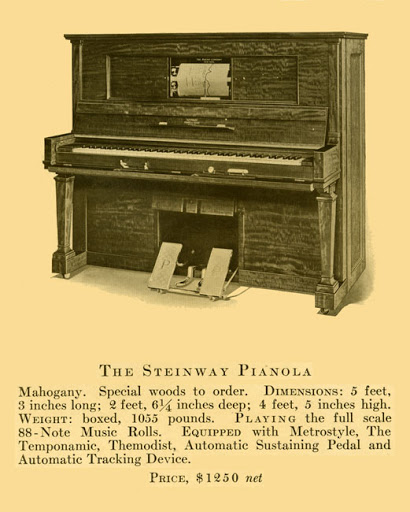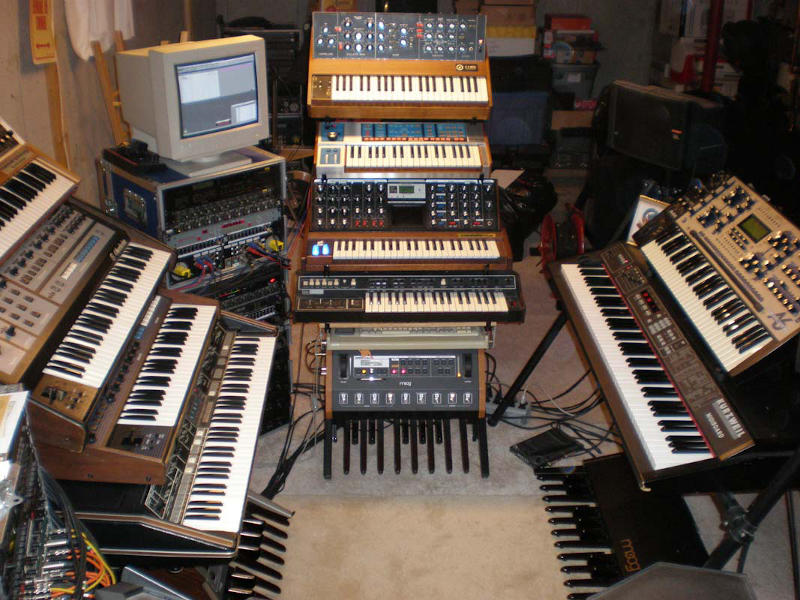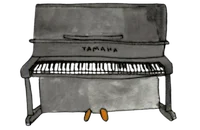Yamaha TransAcoustic™ Pianos Review - Expensive gimmick or design revolution?

This article will deal with 2 questions:
- Are Yamaha TransAcoustic™ pianos a revolution in piano design or a novelty feature?
- Can you achieve a similar outcome with a very simple £37 DIY hack?
Let’s take a closer look.
It’s very important to start by identifying the 4 main types of pianos being produced today:
The 4 main piano types
- Acoustic piano – the sound is produced by the hammers, strings and soundboard. No electricity required
- Digital piano – the sound is produced electronically using samples and is played through headphones or a speaker
- Silent piano – this is a fully acoustic traditional piano with an added electronic silent kit which lets you dis-engage the hammers from the strings so that sound is only played through your headphones
- TransAcoustic piano – this is exactly the same as a silent piano but you have the extra option to use the piano’s own soundboard as a speaker instead of using headphones.
Pros & Cons of Acoustic, Silent, and TransAcoustic Pianos
Here is my list of pros and cons. Don’t forget to keep scrolling down to read about the £37 DIY hack to convert your own acoustic piano into a TransAcoustic-style piano.
- First, the price. A Yamaha U1-TA2 TransAcoustic piano is around £12,000 and a standard Yamaha U1 is around £7800, an increase of around 50%. That’s a lot of extra money for 1 specific feature
- Both silent and TransAcoustic pianos have the option to play in normal acoustic mode where the hammers strike the strings, and also in silent mode where the hammers are dis-engaged from the strings and the digital samples are played through your headphones instead.
- The more gadgets you attach to an acoustic piano, the more things that could go wrong. Very few piano tuners know how to fix a broken silent or TransAcoustic piano.
- Attaching items to the soundboard increases the risk of buzzing noises appearing over time. Yamaha will certainly have considered this issue and will have put things in place to prevent buzzing but it is something for you to consider.
- When playing a TransAcoustic piano at low volumes you will hear an exaggerated “thudding” sound from the piano action that is normally drowned out by the music.
- TransAcoustic and silent pianos have to be plugged in. Do you want yet more wires in the home or would you prefer a stand-alone musical instrument?
- Silent & TransAcoustic pianos both have the option to connect to other devices via bluetooth, USB, MIDI or Wifi to help you with composition, recording or live performance. Do you enjoy relying on those connections to play a musical instrument or do they sometimes frustrate you?
- An acoustic piano with integrated electronics can quickly become obsolete. This means your piano’s value could take a massive hit when you try and sell it. Will the TA2 be replaced by a TA3? And what will your piano be worth if a TA4 and TA5 is released? A good quality acoustic piano typically holds its value far better than an electronic piano.
TransAcoustic Demonstration Video
This is the best demonstration video that I have managed to find on Youtube. The guy in the video loves the TransAcoustic feature but is shocked by the price.
I’d like to show you some of the comments that were posted underneath the video above as they make some valid points.
“The action regulation of these pianos is compromised to accommodate the hammer travelling a shorter distance when the silent mode is activated. The touch is the most important factor for the pianist so I would not recommend this expensive gimmick”
This comment is technically accurate. The action does have to be adjusted to make space for the “mute rail” which prevents the hammers from hitting the strings when playing in silent mode. However, we have conducted experiments in our showroom with concert pianists to see if they can tell any difference and so far, nobody has made a negative comparison. So, whilst this is a valid theoretical concern and you should certainly be aware of it, we don’t feel this issue alone is a show-stopper.
“Electronics within acoustic pianos are always a bad combination. The acoustic piano will last 30-40 years but the electronics will be obsolete in 3-5 years. My Clavinova stopped working after 5 years. Some keys are randomly being played at maximum volume, regardless of how hard I press the key. This is very disturbing and makes the piano useless.”
I have to agree – does anyone remember the “Metrostyle, Temponamic or Themodist” on the old pedal-powered player pianos? You can’t improve an acoustic piano with clever add-ons, but you can sometimes make them worse.

“If you need to practice with headphones or record & play with different sounds, it is better to have a digital piano and separately purchase a regular piano; the acoustic piano will last a long time and you can replace the digital-piano when it becomes obsolete. All for less than the price of a TransAcoustic”
Agreed!
Which type is best for improving your playing?
If you want to improve your piano playing you must resist the urge to get a piano full of gadgets and instead buy a dedicated acoustic piano. It can be hard to stay focused on your piano practise when you know that you can flick a switch, connect to Bluetooth and play along to your favourite Spotify backing tracks.
That said, I’ve received an email from a piano teacher with the following comment:
“Being able to play along with the piano where the sound you are making and the track you are playing with are coming from the same source while still having the physical mechanics and touch of a real keyboard with hammers/strings is incredibly advantageous. Electric keyboards are good but nothing can compare to the acoustic touch, so this Is the best of both worlds”
Source: Christy’s Piano Instruction
What if you love gadgets?
If you love gadgets, your ideal setup should be a good quality acoustic piano and a dedicated digital piano with weighted keys, Bluetooth, USB, MIDI and Wifi all hooked up to a DAW or iPad with Garageband, Fruity Loops, stomp pedals, loop stations, vocoders, and synth keyboards all mounted on a massive scaffolding rack. Oh yes!

£37 TransAcoustic-style Hack
Finally, let me introduce you to “NotaBene” who took part in an interesting discussion about TransAcoustic pianos on the PianoWorld.com forum. Here are some of his most interesting comments, which I’ve edited for brevity.
“You can turn any piano into a transacoustic piano extremely easily by installing a transducer on the soundboard! The Dayton Audio DAEX25VT-4 (£17) will be perfect and then you need a micro-amp like the LEPY 2020A (£19.99).
You can find videos online showing where Yamaha place their transducer, so just copy that location and that’s it, you have a DIY version of what Yamaha did. It works very well, it’s fun, it gives a rich reverberation, a profound texture, it gives an extraordinarily rich sound to my Fender Rhodes and you can even play your radio through it.
Notabene complains that some of the demo videos on Youtube are “cheating” by recording the “line out” audio signal from the silent module rather than the sound produced by the piano’s soundboard. He singles out a particular video made by Bert Smorenburg on behalf of Yamaha Global.
“I realised probably all the videos by Yamaha were a kind of cheat where you listen to the line output when it is demonstrating the silent playing. So my final advice would be absolutely don’t take the word by Yamaha as the truth, it’s the old trick of the line out to demonstrate the quality of the onboard sound system that they use, and it’s a shame they do so!”
Examples of DIY TransAcoustic Pianos
I have found 2 examples of a DIY TransAcoustic-style soundboard speaker. On this first video, you can see the 2 transducers stuck to the soundboard at around the 26 seconds mark:
This next video is a complete explanation of taking a traditional acoustic piano through silent conversion using adsilent and then adding transducers to the soundboard to use the piano’s own soundboard as the speaker for playing the audio samples.
The author of that video emailed the following tips
One interesting part that I don’t stress in the video is that I anchored the driver of the exciter (the magnet housing that is) to the frame of the piano to prevent the driver from vibrating but instead get the vibrations into the soundboard. This solution is actually implemented by Yamaha in their Transacoustic pianos and they have a patent on it (US8859866), which is probably why Kaway does not connect their drivers to the frame in their corresponding pianos. You can see my solution in the video at 5:35. There was a threaded hole in the center of the driver which I used for screwing a threaded rod into and then connecting the road with a 3D printed fixture to the frame. Due to the patent situation I decided not to mention this explicitly in the video. But it makes a huge difference, especially in the base response. As you can imagine, without this anchoring the exciter will move itself instead of the soundboard when the frequency is low. I would think that much of the vibration noise you experienced is from the driver housing that starts shaking too much when playing loud if it is not anchored.
Let’s try it!
I’ve ordered the components listed above and I’ll do some testing of my own and will report back to our social media channels. Watch this space!
Who should buy a TransAcoustic piano?
If you have spare cash and you enjoy having the latest conversation piece in your home then yes, you should buy one and enjoy the novelty and innovation. Just prepare yourself for the sharp depreciation that happens with most pianos with integrated electronics.
Who shouldn’t buy a TransAcoustic piano?
If you have a young pianist working through their grades or if you are buying a piano to improve your playing, I would avoid this temptation and stick to a traditional acoustic piano. If you enjoy playing with musical gadgets then build yourself a nice collection of keyboards & synths to go alongside your acoustic piano.
Alternative models to consider
Our best advice is to get a standard acoustic piano (such as a Yamaha U3 or similar model) but if you need to practise without disturbing anyone then you could consider a Yamaha acoustic piano with a silent kit added. We can fit the silent kit to any of our pianos so please see our stocklist and contact us if you have any questions.
Conclusion
TransAcoustic pianos definitely have a “wow factor” but once that wears off you might be left wondering if all that extra money was well spent. Aspiring musicians should focus on buying a dedicated acoustic piano with an optional silent kit to keep the neighbours happy. Finally, if you really must have the TransAcoustic technology in your home, try the £37 DIY hack.
I hope you had as much fun reading this as I did writing it.
Any questions? Contact us
Mark :)
p.s. TransAcoustic™ is a registered trademark of Yamaha Corporation










